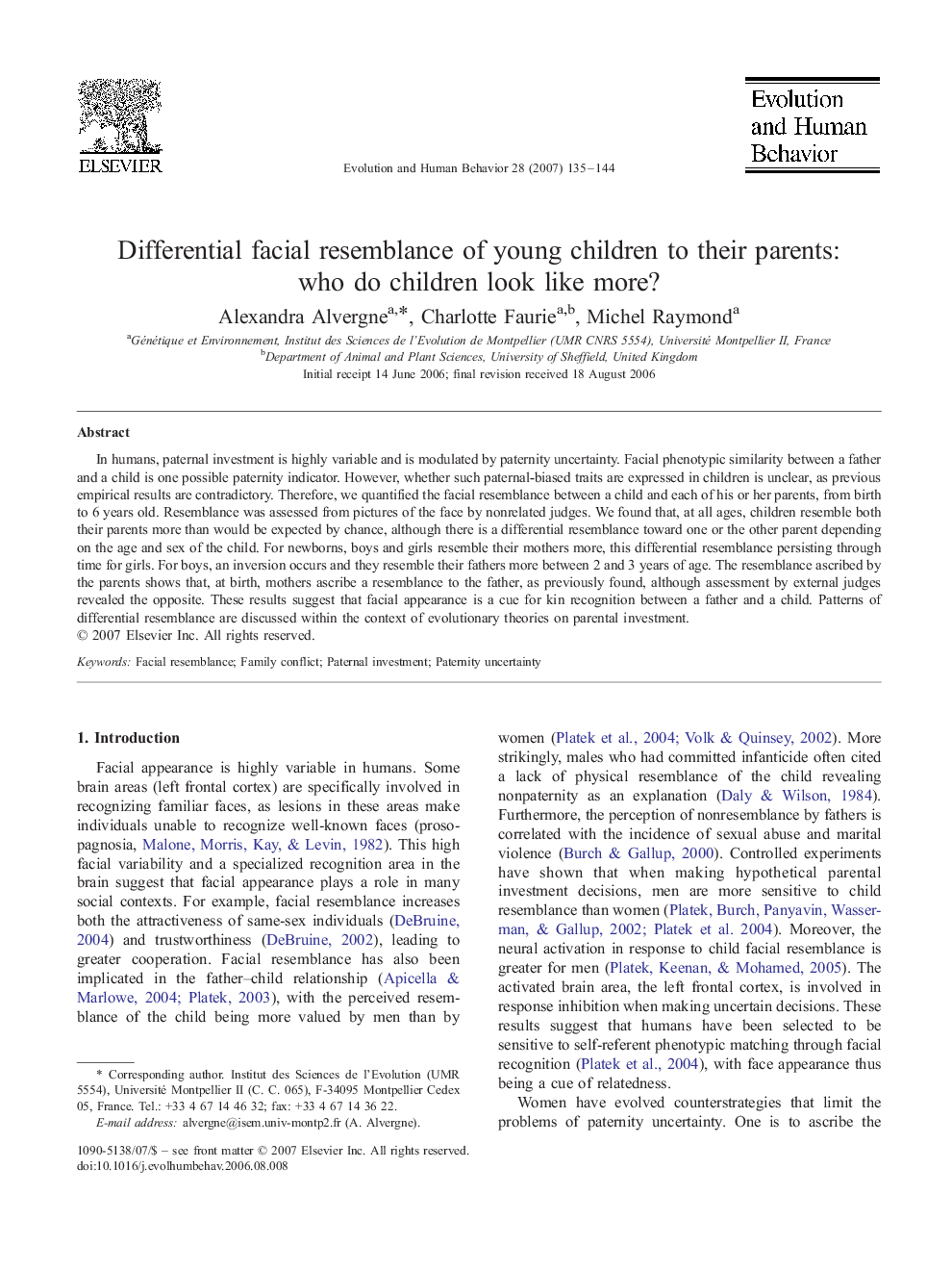| Article ID | Journal | Published Year | Pages | File Type |
|---|---|---|---|---|
| 943564 | Evolution and Human Behavior | 2007 | 10 Pages |
In humans, paternal investment is highly variable and is modulated by paternity uncertainty. Facial phenotypic similarity between a father and a child is one possible paternity indicator. However, whether such paternal-biased traits are expressed in children is unclear, as previous empirical results are contradictory. Therefore, we quantified the facial resemblance between a child and each of his or her parents, from birth to 6 years old. Resemblance was assessed from pictures of the face by nonrelated judges. We found that, at all ages, children resemble both their parents more than would be expected by chance, although there is a differential resemblance toward one or the other parent depending on the age and sex of the child. For newborns, boys and girls resemble their mothers more, this differential resemblance persisting through time for girls. For boys, an inversion occurs and they resemble their fathers more between 2 and 3 years of age. The resemblance ascribed by the parents shows that, at birth, mothers ascribe a resemblance to the father, as previously found, although assessment by external judges revealed the opposite. These results suggest that facial appearance is a cue for kin recognition between a father and a child. Patterns of differential resemblance are discussed within the context of evolutionary theories on parental investment.
